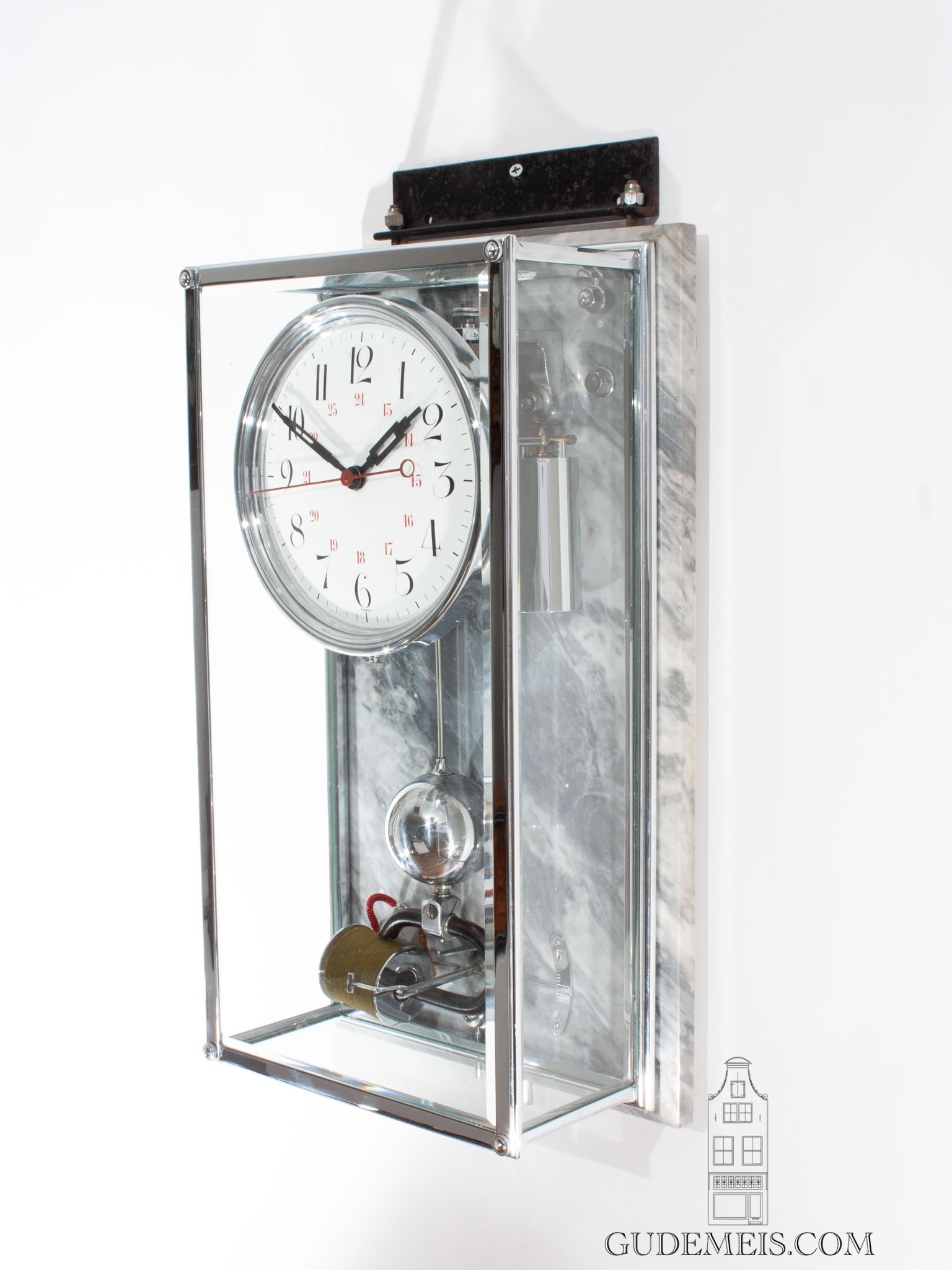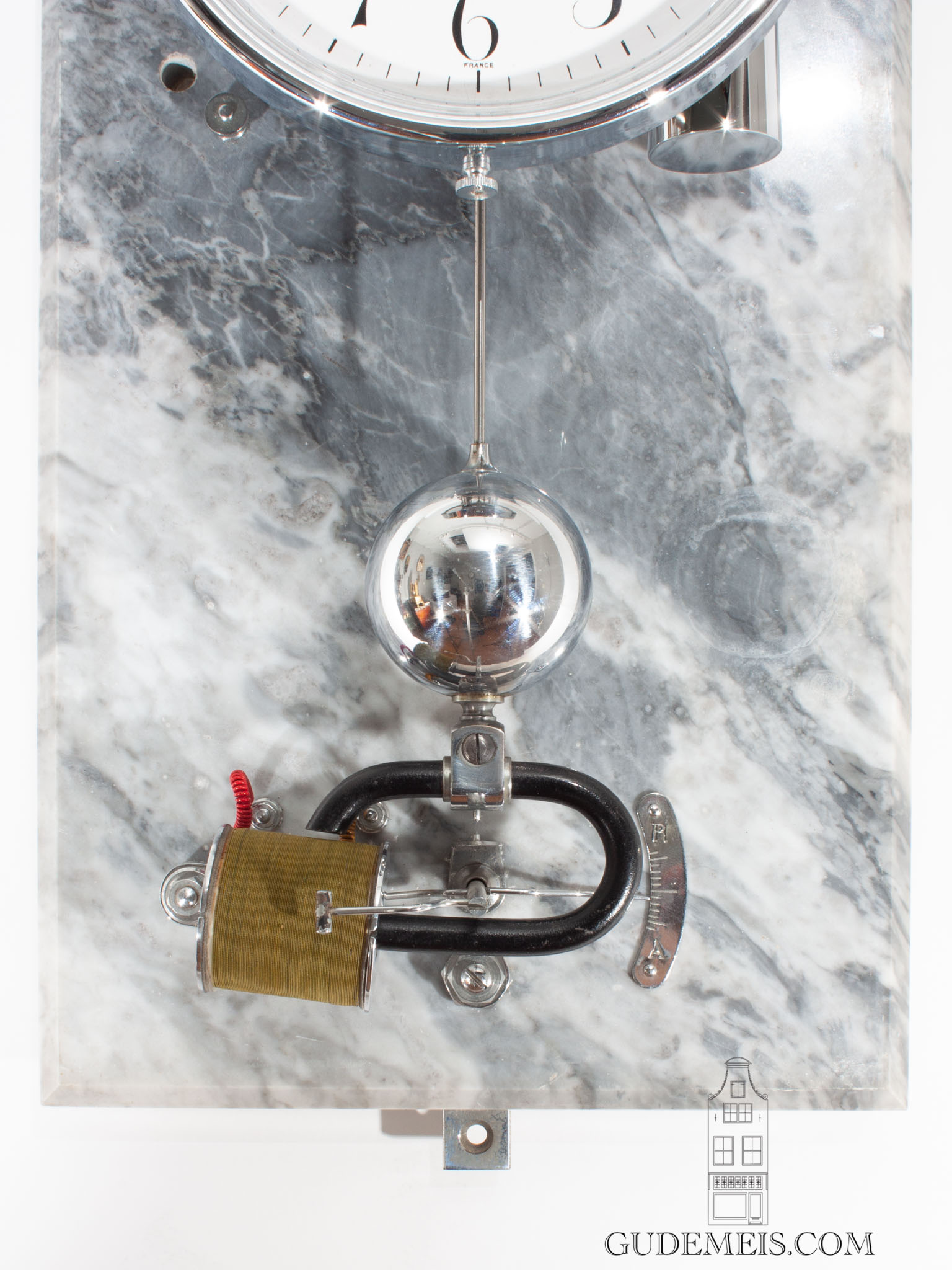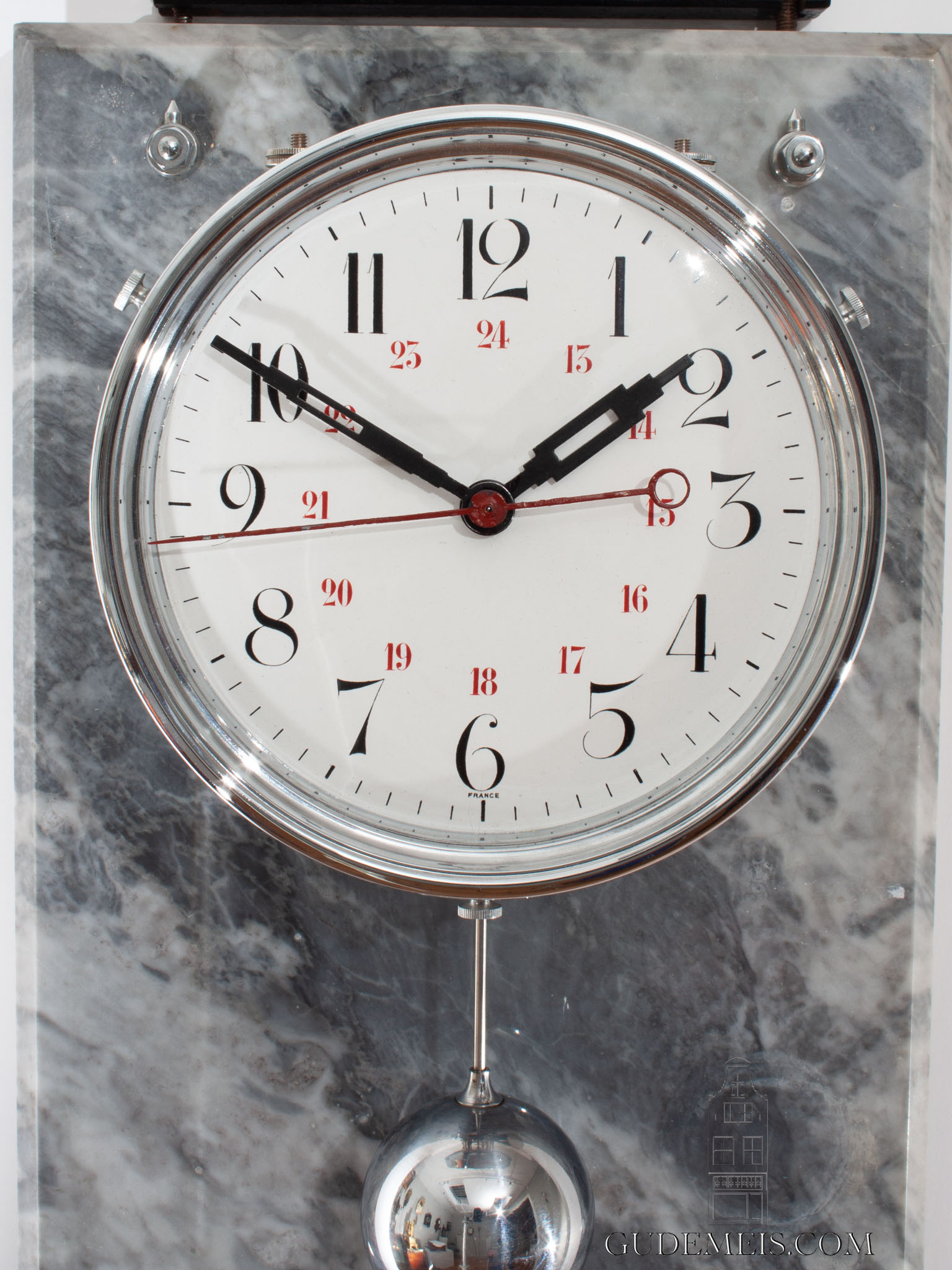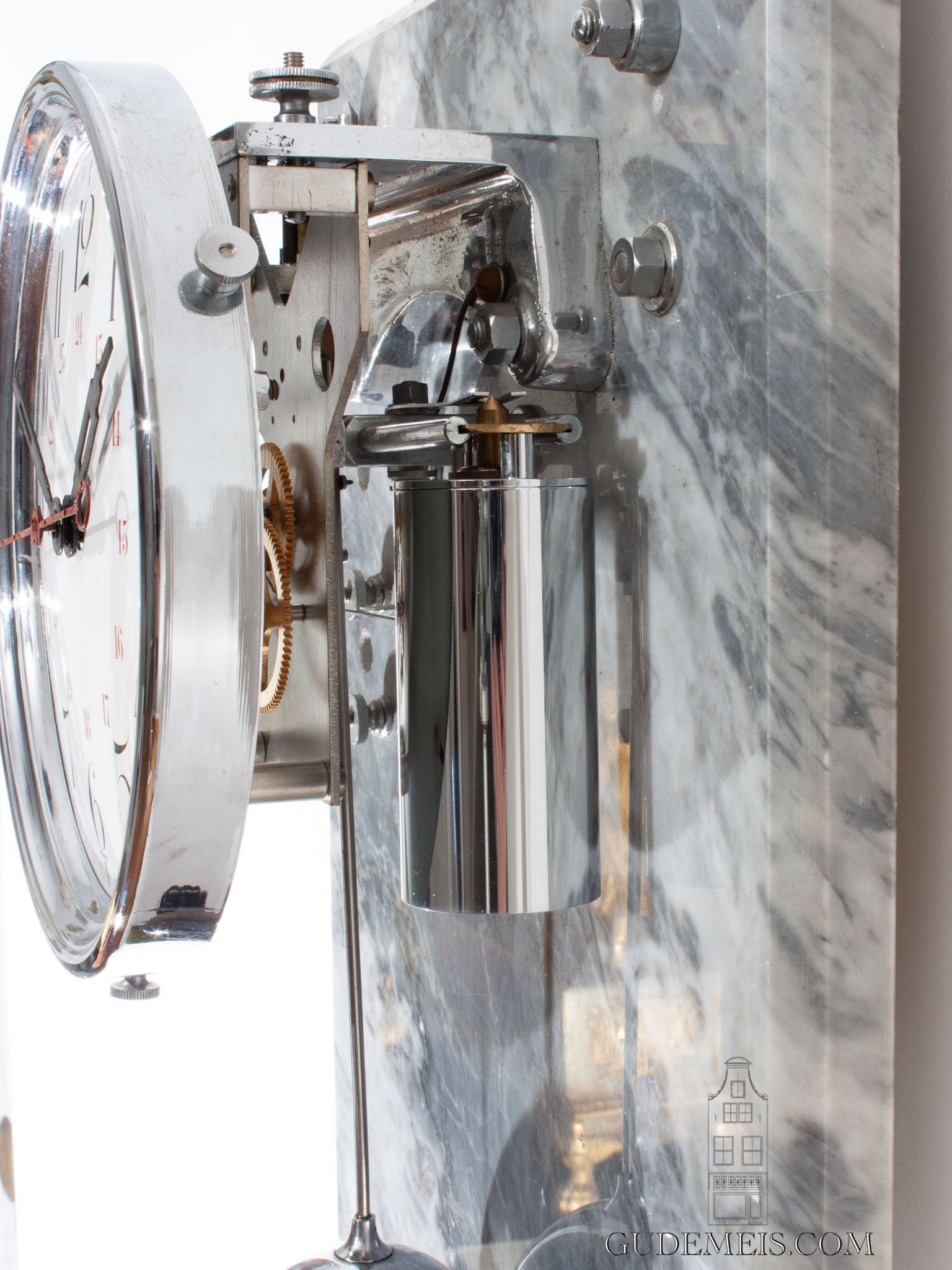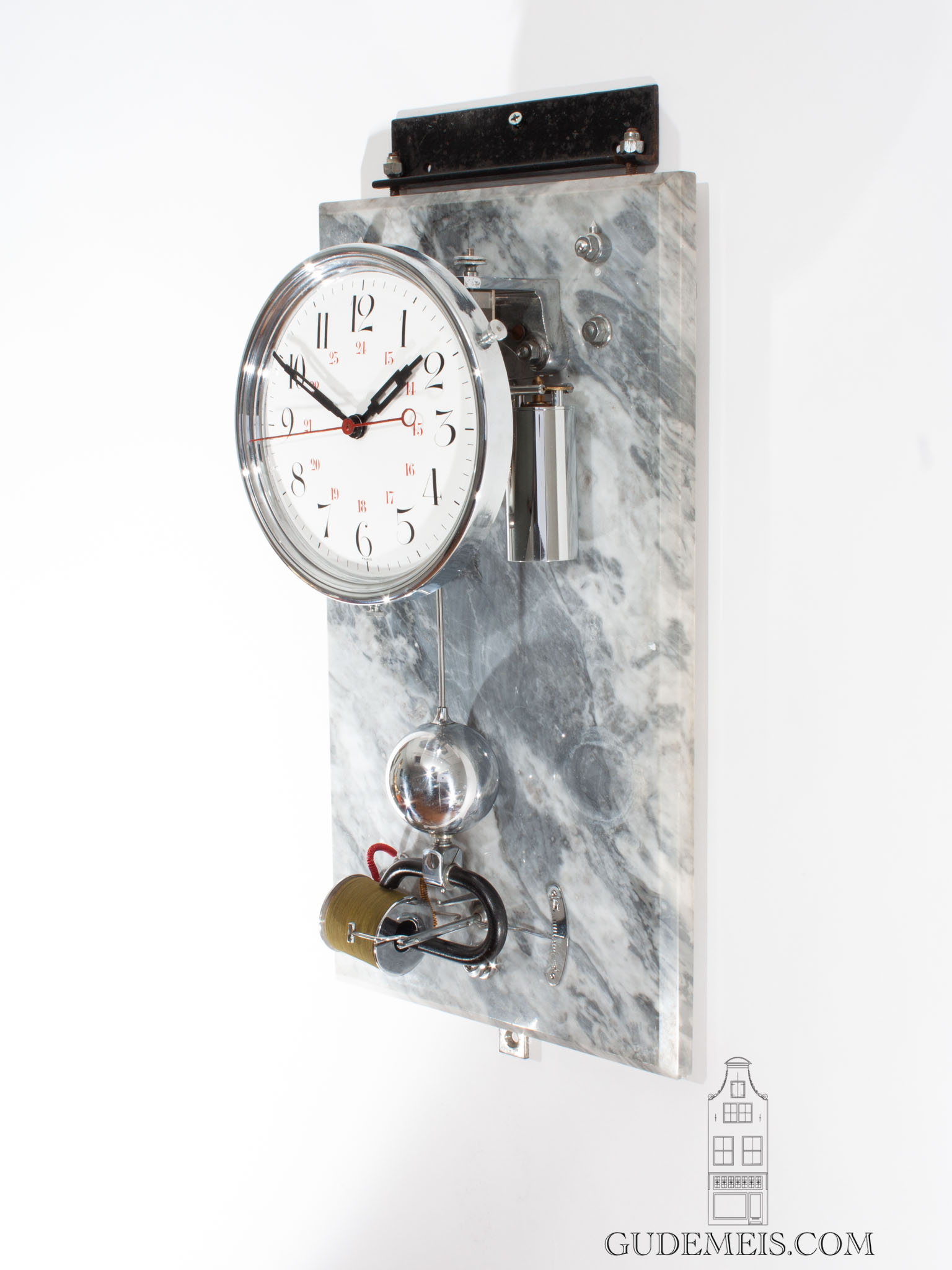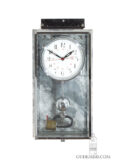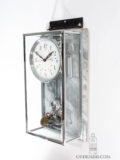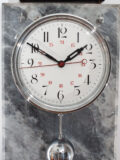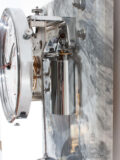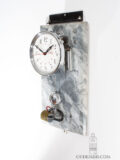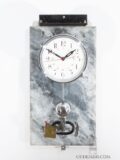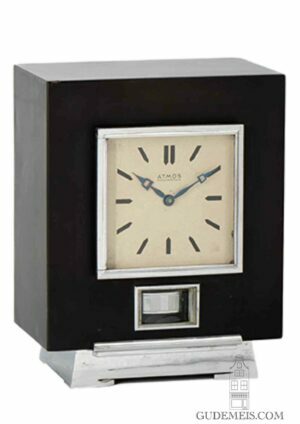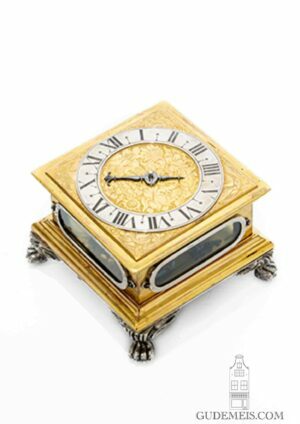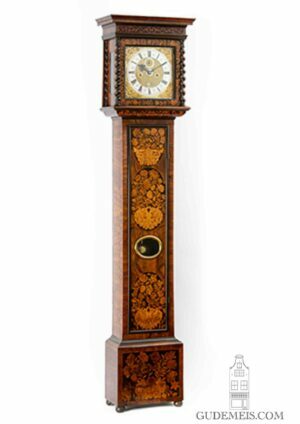A French Art Deco nickel electrical wall regulator clock, Brillié Frères, circa 1920.
Description
Brillié Frères
‘Brillié’ was founded in 1898 by Charles Vigreux and Lucien Brillié in Levallois-Perret near Paris under the name ‘Société en Nom Collectif’ (SNC). Between 1900 and 1910 the name was changed to ‘SNC Brillié Frères’. Around 1912 it was adapted to ‘SA Brillié Frères’ which name was continued to the closure in 1981. It is hard to find an exact date but around 1900-1908 Professor Féry created an electric clock with a horse shoe shaped magnet moving through a coil. Brillié adapted the design by improving the shape of the magnet. The practically free moving pendulum is made of invar, an alloy which doesn’t react to temperature changes. Because of this the length of pendulum remains constant resulting in accurate time keeping. It resulted in an electrical precision clock which, when properly set up, lost or gained less than a second. In the Paris Observatory several half second pendulum Brillié regulators were used for time keeping. These clocks can also be used as master clock.
Sweep seconds
The enamel dial has black Arabic numerals for the day hours. The inner red Arabic numerals are for the night hours. The black hands have a nice Art Deco shape. The red sweep seconds gives a nice contrast with the other hands and dial.
electric regulator
Strictly speaking this regulator doesn’t have a movement. The pendulum with half second oscillation has an invar rod with a horse shoe shaped magnet below. The magnet is impulsed by an electrical impulse just before the middle of the swinging arc. Because of this, the pendulum arrangement is an independent working system. A pin fixed to the pendulum rod pushes a wheel which moves the hands every second. On the coil is a fine regulation mechanism.
nickel case
Most Brillié regulators are fitted with a glazed wooden case mounted to a marble back board. The model 1595 with a five glass brass lined case is much more uncommon. This very attractive and still modern looking version with a nickel plated five glass case on a well figured marble back board is very rare. The whole is mounted to the wall with a suspension plate.

